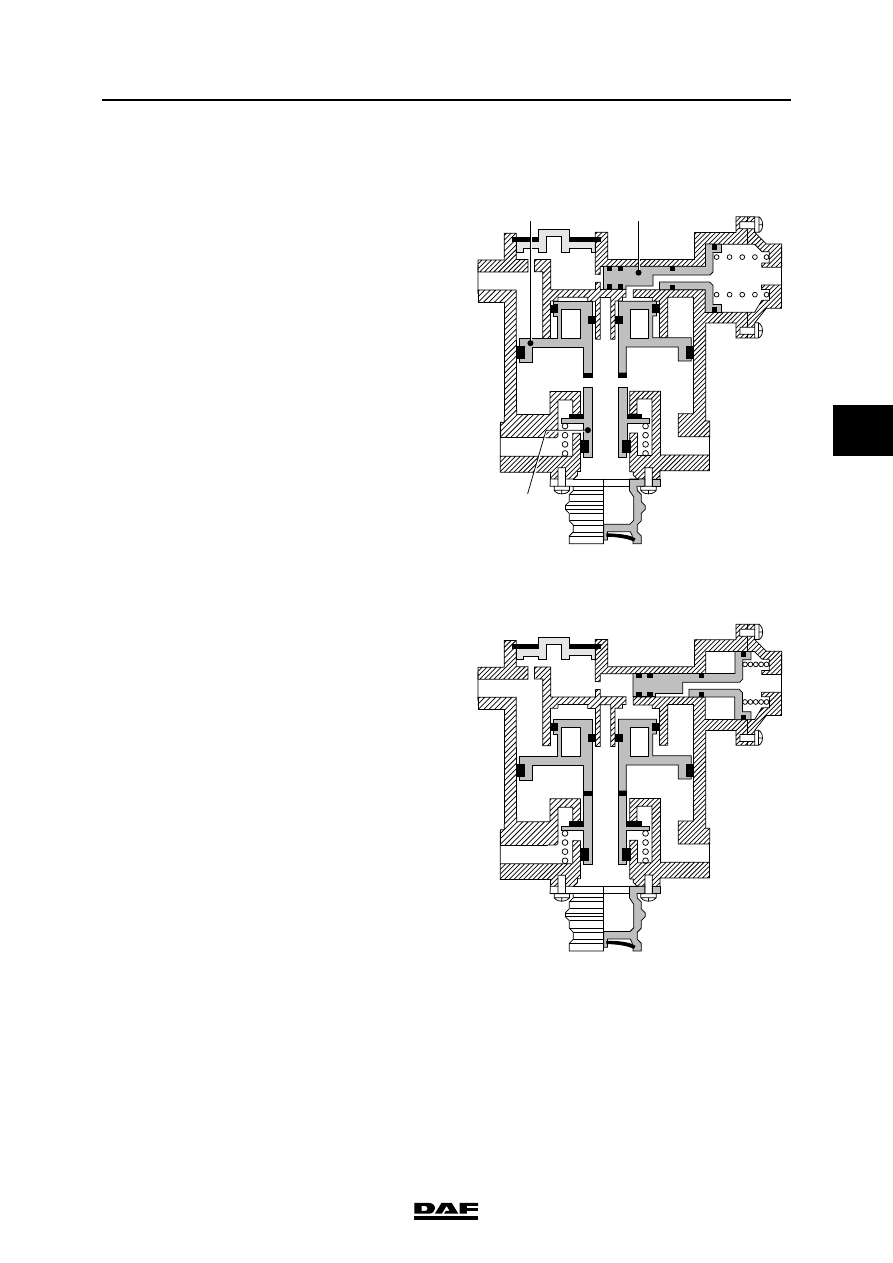DAF LF45, LF55 Series. Manual - part 457

©
200436
2-7
Inspection and adjustment
BRAKE SYSTEM AND COMPONENTS
ΛΦ45/55 series
6
4
2.5 INSPECTION EMPTY/LOAD RELAY VALVE
1.
Using a T-piece, connect a pressure gauge
to connecting point 41.
2.
Connect a pressure gauge to the test
connection on one of the brake chambers of
the front axle.
3.
Connect a pressure gauge to the test
connection on one of the brake chambers of
the rear axle.
4.
Pressurise the system.
Testing when empty
1.
Set the load sensing valve to the empty
position.
2.
Slowly depress the brake pedal.
The pressure on the front axle should rise
gradually, not in jumps.
The pressure on the front axle will rise less
quickly than that on connecting point 41.
(With an empty vehicle, the difference will be
greater than with a partially loaded vehicle).
1
2
3
42
41
R600904
4
6
5
1
2
3
42
41
R600905